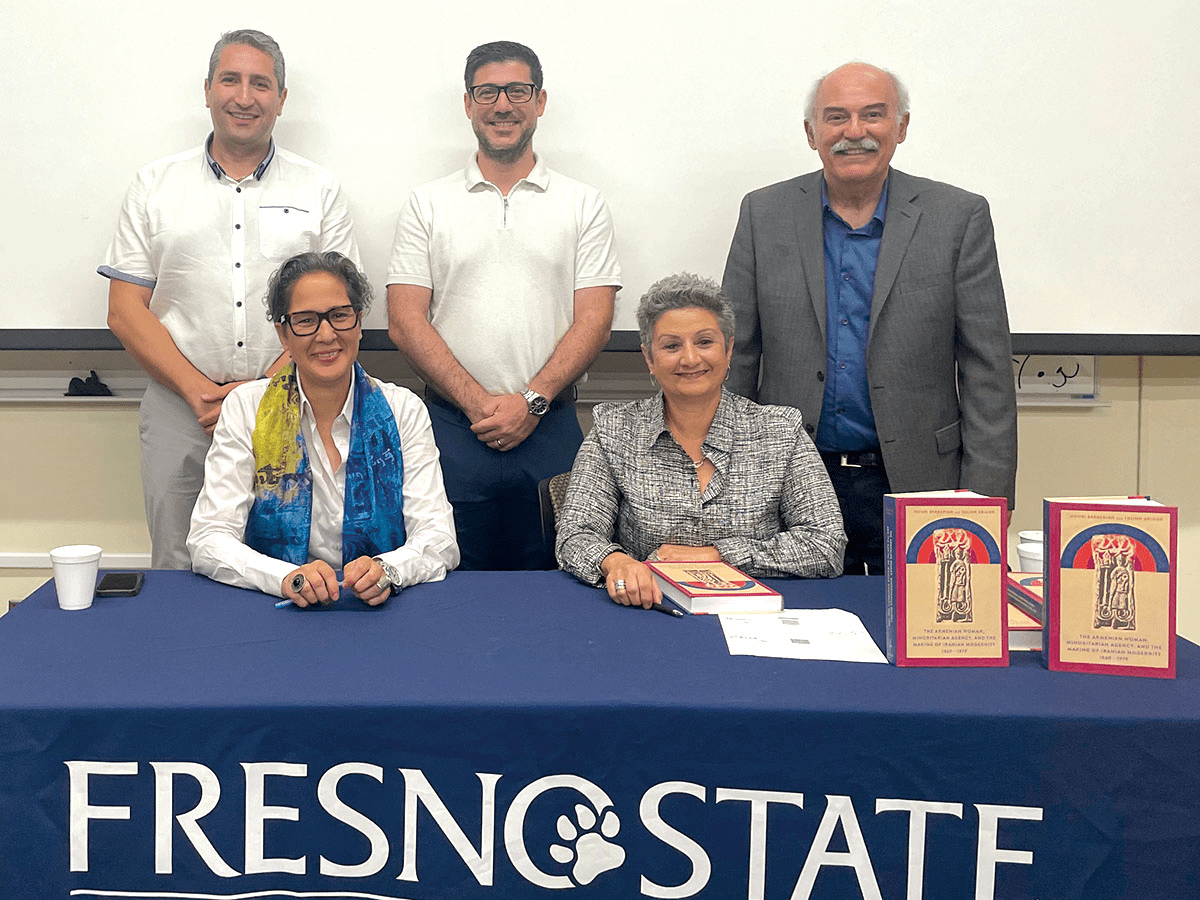Dr. Berberian and Dr. Grigor Discuss Their Research and New Book on Armenian Women in Iran, 1860-1979

Armenian women, as a minoritized ethnoreligious and gender category, played a pivotal role in shaping Iranian modernity. Dr. Houri Berberian (Professor of History, Meghrouni Family Presidential Chair in Armenian Studies, and Director of the Center for Armenian Studies at the University of California, Irvine) and Dr. Talinn Grigor (Professor of Art History in the Department of Art and Art History at the University of California, Davis) studied the emergence of women’s organizations and indigenous feminism on modern Iran in their new book, The Armenian Woman, Minoritarian Agency, and the Making of Iranian Modernity, 1860-1979.
The Armenian Studies Program invited Dr. Berberian and Dr. Grigor to Fresno State to present their research, on Monday, August 25, 2025.
The presentation of the book highlighted how women’s organizations, such as the Armenian Women’s Benevolent Society (AWBS) and the Armenian Woman Union (AWU), addressed Armenian women’s impact on the social and political development of Armenian women in Iran. These women’s organizations promoted women’s education, literacy, and empowerment, insisting on women-only leadership. They paved the way for a new form of intellectual power through oral and written mediums.
As written records were fragmented or lost during exile, silenced by patriarchy, or neglected, the authors turned to visual and material culture as well as oral interviews. AWU translated feminist works in the 1960s and supported women writers. These alternative archives made their lives visible.
In response to patriarchal representations in the press, women resorted to press campaigns and cultural events to assert feminist presence in Irano-Armenian society, in the 1960s–1970s. Berberian and Grigor illustrated this period with satirical newspaper clippings targeting women’s groups, women’s responses, and images from a 1974 historical women’s costume exhibition. These works revealed the tense social and cultural climate of the time.
With Grigor’s expertise in visual material and Berberian’s in textual, the book interweaves visual and material culture with textual evidence to uncover not just what Armenian women did, but how their lives were remembered and represented. Thus, each section of the book is represented by a visual source, including a photograph of three graduates (representative of women’s development in education) and a seventeenth-century Isfahan oil painting, misattributed as Chinese art in Kensington Palace, as an example of Armenians’ cultural misrepresentation in Iran.
Armenian women transformed exclusion from public life into opportunities for cross-cultural feminism, asserting agency through charity, education, and cultural production.
The authors explained that their own “distinct in betweenness,” living lives between multiple cultures, languages, and backgrounds informed their research and writing. They parallel this in their book by writing including three distinct languages: Armenian, English, and Iranian.
To close their presentation, Berberian and Grigor read excerpts from the book, offering the audience a glimpse into its storytelling tone and narrative style. Their delivery balanced historical analysis with lived experiences, highlighting key parts such as the formation of the first Armenian women’s society, the mesh of global and individual perspectives, and the influence of Western feminist thought. The authors’ passion for the subject was evident, and their ability to blend intellectuality with humanity left a strong impression on listeners.
Ultimately, The Armenian Woman, Minoritarian Agency, and the Making of Iranian Modernity, 1860–1979 demonstrates how Armenian women transformed marginalization into activism. Through benevolent societies, cultural production, and feminist movements, they asserted agency, reshaped women’s roles in Irano-Armenian society, collaborated with Iranian women, state, and society, and contributed to a broader women’s movement in Iran.





